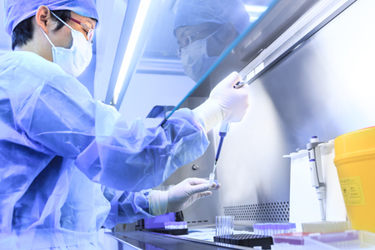Sensitive AAV Capsid Protein Impurity Analysis By CE Using Easy To Label Fluorescent Chromeo Dye P503
By Marcia Santos, SCIEX

Adeno associated virus (AAV) is a popular class of gene therapy delivery vehicle used mostly due to nonpathogenicity and high stability. Structurally, AAVs are composed of icosahedral proteic shell called Capsid or Viral Protein (VP) which contains a viral genome. So far, AAV exists in some 13 human and primate serotypes which in combination with the primary sequence differences mediate the AAV cell and tissue specificity. As AAV take center stage in gene therapy treatment of many genetic conditions, reliable and quantitative assays are critical for the proper characterization of these molecules as well as the quantitation of impurities.
In this technical note, an easy sample preparation and labeling scheme is described using commercially available fluorescent tag which doesn’t require buffer exchange nor dye cleanup for the low level detection of AAV8. Capillary Electrophoresis (CE) with Laser Induced Fluorescence (LIF) detection using a commercially SDS-MW chemistry kit and pre-assembled bare fused silica cartridge was successfully used to separate the impurities and characterize the AAV capsid proteins.
Get unlimited access to:
Enter your credentials below to log in. Not yet a member of Drug Discovery Online? Subscribe today.
